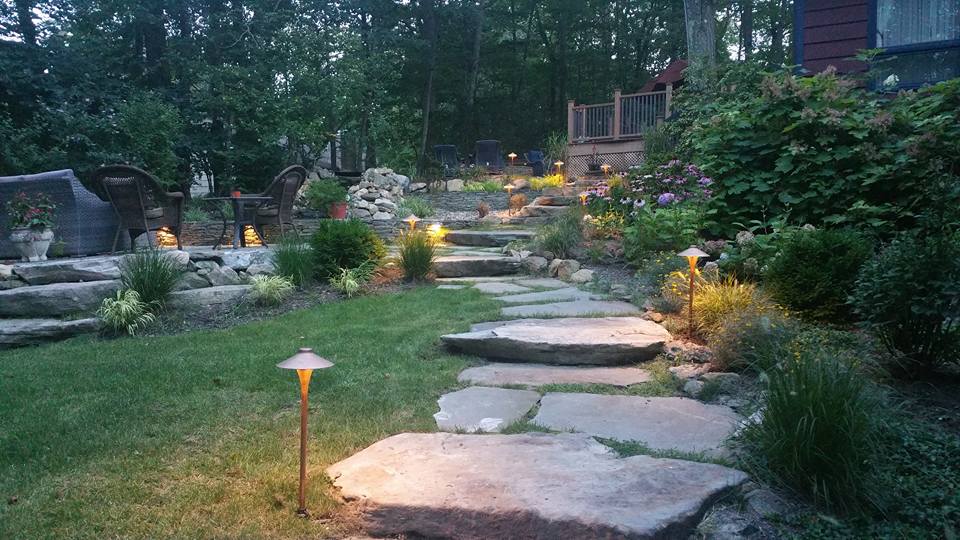Landscape lighting is important for many reasons. It increases safety, extends the hours you can use your yard and creates a gorgeous nighttime landscape. But there’s a lot more to lighting your property than just adding a few path lights. For the best overall effect, your Peekskill, NY, landscape lighting should also emphasize architectural elements and highlight plants, trees and shrubs.
Lighting Your Property
Manzer’s Landscape Design and Development, Inc. knows how to highlight all the best features of your property. They understand that while lighting for safety is important, the real magic of outdoor lighting is the beautiful ambience it creates. An experienced landscape designer will ensure your landscape lighting works for your needs and is also aesthetically pleasing.
Related: 6 WAYS TO UTILIZE LIGHTING TO ENHANCE YOUR CROTON LANDSCAPE
A good lighting plan has two main goals. It will increase safety by illuminating outdoor rooms, traffic areas and safety hazards. It will also highlight attractive focal points such as water features, statues and trees and shrubs. By employing these different lighting techniques, your backyard will look stunning day or night.
Up-Lighting
Uplighting is one of the most common landscape lighting practices. It is used for dramatic effect and works on almost any feature of your landscape. Uplighting involves placing spotlights on the ground under plants and trees to highlight the leaves, trunk or branches. This technique will emphasize texture and creates striking focal points. Both well-lights and spotlights can be used for uplighting.
Spotlights with a narrow beam can be placed right at the base of a small tree with the light aimed directly up the trunk to create impact. For larger trees, multiple spotlights, placed a short distance away from the tree, can be aimed upwards at 45˚ to accentuate foliage and texture. The larger the tree, the more lights it will require. Adjusting the distance of the lights will create different lighting effects.
Moon Lighting
This downlighting technique creates the appearance of moonlight shining down on your landscape. By placing lights high up in a tree and aiming them downwards, the branches and ground below are washed in a soft light. The light feels natural and provides a more romantic atmosphere than other lighting methods.
Placing multiple lights in the branches of a tall tree and aiming them both upwards and downwards will create a fuller light. Crossing light beams are avoided for the best results. Moonlighting can also help create the effect of moonlight on a patio or other outdoor entertaining area.
Cross-Lighting
This technique adds depth and helps reduce shadows in your nighttime landscape. Placing lights a distance away on either side of a tree or shrub and aiming them directly at the foliage, can highlight your most attractive landscape features. Cross-lighting is especially effective for making large trees and bushes more noticeable at night.
Silhouetting
Silhouetting is an excellent way to emphasize interestingly shaped trees and shrubs at night. Placing a light source behind the softscaping feature will create a dramatic silhouette. Ensuring the light source is hidden from view will also make this effect more successful.
Related: Layered Lighting for Inviting Summer Outdoor Spaces
Shadowing
Shadowing is similar to silhouetting but involves washing your tree or shrub with light from the front instead of behind. If the selected feature has a wall or other flat surface behind it, the lighting will create a dramatic shadow. Angling the light upward will create larger shadows. On breezy nights, the shadows will seem to dance.


